Timur: Brutal Military Leader And His Desire To Conquer But Not To Rule
A. Sutherland - AncientPages.com - Historical records confirm that the greatest military campaigns of conquest were often accomplished by the robust nomadic and semi-nomadic peoples inhabiting Central Asia.
Their horsemen were perfectly trained and could defeat the armies of any settled civilization. These Asian fighters went to battle with no fear because they were inspired by their most skilled leaders such as the Mongol Genghis Khan or the Tatar Timur, also known as Timur the Lame or Tamerlane.
Today’s article is devoted to Timur, who became one of the most successful military leaders in history.
Timur Rose To Power Despite A Serious Physical Disability
Timur was a conqueror born into a tribe of horsemen in the area of Central Asia that is today Uzbekistan and Tajikistan. As a young man, Timur led a band of lawless fighters who robbed traveling merchants and engaged themselves in problems with local tribes.
Left: Timur -Turco-Mongol Conqueror. Source ; Right: A Timurid-era illustration of Timur.
One day, he suffered an arrow wound that left his right arm and leg partially paralyzed. He was able to ride a horse but he could only walk short distances, otherwise needing to be carried.
His crippling injuries did not stop Timur from rising up and being one of the most feared leaders of the 14th and early 15th centuries.
Sophisticated, Intelligent And Very Cruel Ruler
Timur spoke Persian, Mongolian, and Turkish. He was a learned ruler, who respected scholars, enjoyed their company much, and was generous to them.
His physical strength was obviously insufficient but his mental capabilities were perfect. He was described as very intelligent; he was a first-class chess player and his brain was capable to come up with the best military strategies.
He is regarded as a military genius, a highly skilled strategist with an unusual ability to work within a highly fluid political structure to win and maintain a loyal following of nomads during his rule in Central Asia.
He eventually came to rule Samarkand and Balkh, known to the Ancient Greeks as Bactra, giving its name to Bactria, a noble and great city as described by Marco Polo, an Italian explorer, merchant, and writer.
Timur’s successful military conquest was motivated when his fellow nomadic warrior, Tokhtamysh, had reformed the Mongol Golden Horde and plundered northern Persia in 1385.
Timur Defeated His Rival And Conquered Others
Timur’s response was to attack and conquer his rival and it happened. The two of them confronted their powerful armies. The final battle took place at the River Terek in 1395 and Timur was victorious. His army significantly devastated Tokhtamysh’s territory and in consequence, the Golden Horde ceased to exist.
It was for other campaigns and soon Baghdad and Shiraz were destroyed. In 1387, Timur entered Isfahan and the city immediately surrendered; however, inhabitants of Isfahan did not like high taxes, and the collectors sent by Timur were killed along with some of his soldiers.
Timur's mausoleum is located in Samarkand, Uzbekistan. Source
In response, Timur ordered the massacre of the city's citizens; the death toll was estimated between 100,000 and 200,000. An eye-witness counted more than 28 towers constructed of about 1,500 heads each.
Timur’s Fearless Army
His soldiers included mounted and highly skilled bowmen. They were well-organized; each the so-called ‘tuman’ (ten thousand men) were divided into thousands, hundreds, and tens. There was strong discipline and Timur controlled his army’s operations, such as building pontoon bridges and the soldiers’ camps.
As an army leader, he was very cruel and it is said he expected his soldiers to be the same.
Timur’s very successful military operations were not systematically planned but were rather based on surprising attacks.
Timur Was Reckless And Brutal
For approximately four decades, he attacked and conquered Baghdad, Damascus, and Delhi, where his brutality became particularly evident. He ordered 100,000 Indian prisoners to be killed. It is said this was done in one day. Then, there were other Arab, Georgian, Persian cities sacked and completely destroyed and their populations massacred. His armies reached the borders of Western Europe but his greatest desire was to conquer China.
The great conqueror was still unsatisfied. He fought many successful battles, expanded his territories, and finally advanced to the Aegean, where he seized a Christian crusader castle at Izmir, Turkey, before returning to Samarkand as victorious.
He still wanted more; he wanted to defeat the Ming Empire in China.
Unfortunately for him, it never happened because he died two years later, in 1405 during a winter campaign with his ambitious quest unfulfilled.
Written by – A. Sutherland - AncientPages.com Senior Staff Writer
Copyright © AncientPages.com All rights reserved. This material may not be published, broadcast, rewritten or redistributed in whole or part without the express written permission of AncientPages.com
Expand for referencesReferences:
Stier R. Holms B. S. Tamerlane The Ultimate Warrior
Marozzi J. Tamerlane: Sword of Islam, Conqueror of the World
Payne R. The World of Art
More From Ancient Pages
-
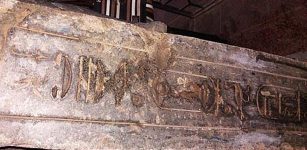 Black Granite Statue Of King Amenhotep III Accidentally Recovered
Archaeology | Jan 1, 2016
Black Granite Statue Of King Amenhotep III Accidentally Recovered
Archaeology | Jan 1, 2016 -
 Anqa: “Forgotten Twin” Of Dura-Europos Where Time Stood Still
Archaeology | May 9, 2024
Anqa: “Forgotten Twin” Of Dura-Europos Where Time Stood Still
Archaeology | May 9, 2024 -
 Early Humans Were Probably Driven To Extinction By Climate Change- Study Suggests
Civilizations | Oct 15, 2020
Early Humans Were Probably Driven To Extinction By Climate Change- Study Suggests
Civilizations | Oct 15, 2020 -
 Mystery Of The Ancient Talayot Sword
Archaeology | Sep 30, 2019
Mystery Of The Ancient Talayot Sword
Archaeology | Sep 30, 2019 -
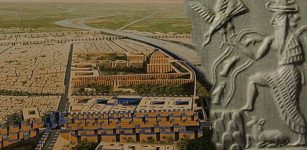 Eridu: Pre-Flood City That Belonged To Enki, God Of Creation, Intelligence, Wisdom And Magic
Civilizations | Mar 27, 2017
Eridu: Pre-Flood City That Belonged To Enki, God Of Creation, Intelligence, Wisdom And Magic
Civilizations | Mar 27, 2017 -
 Declining Fertility Rates May Explain Neanderthal Extinction
Archaeology | Jun 3, 2019
Declining Fertility Rates May Explain Neanderthal Extinction
Archaeology | Jun 3, 2019 -
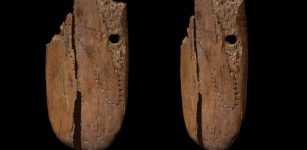 41,500-Year-Old Ivory Pendant Is The Oldest Evidence Of Humans Decorating Jewelery In Eurasia
Archaeology | Nov 26, 2021
41,500-Year-Old Ivory Pendant Is The Oldest Evidence Of Humans Decorating Jewelery In Eurasia
Archaeology | Nov 26, 2021 -
 LIDAR Discovers 18-Kilometer (11-Mile) Maya Road In The Yucatan Jungle
Archaeology | Dec 5, 2023
LIDAR Discovers 18-Kilometer (11-Mile) Maya Road In The Yucatan Jungle
Archaeology | Dec 5, 2023 -
 Was The Tree Of Knowledge Perhaps The Hall Of Records? – A Mysterious Ancient Library Containing Forbidden Knowledge
Ancient Mysteries | Mar 29, 2017
Was The Tree Of Knowledge Perhaps The Hall Of Records? – A Mysterious Ancient Library Containing Forbidden Knowledge
Ancient Mysteries | Mar 29, 2017 -
 Mystery Of The Lydenburg Heads
Artifacts | Jun 13, 2014
Mystery Of The Lydenburg Heads
Artifacts | Jun 13, 2014 -
 Were Other Humans The First Victims Of The Sixth Mass Extinction?
Evolution | Nov 1, 2023
Were Other Humans The First Victims Of The Sixth Mass Extinction?
Evolution | Nov 1, 2023 -
 The Faery Grail Of Hospitality And Accord- The Forgotten Story – Part 1
Ancient Mysteries | Sep 25, 2019
The Faery Grail Of Hospitality And Accord- The Forgotten Story – Part 1
Ancient Mysteries | Sep 25, 2019 -
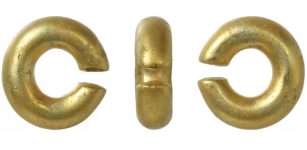 ‘Incredibly Mysterious’ Bronze Age Gold Penannular Ring Found In Norfolk
Archaeology | Apr 24, 2023
‘Incredibly Mysterious’ Bronze Age Gold Penannular Ring Found In Norfolk
Archaeology | Apr 24, 2023 -
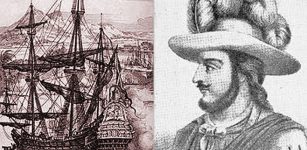 Gil Pérez: Unexplained Ancient Teleportation Of A Spanish Soldier
Featured Stories | Oct 15, 2018
Gil Pérez: Unexplained Ancient Teleportation Of A Spanish Soldier
Featured Stories | Oct 15, 2018 -
 Neanderthals Had Older Mothers And Younger Fathers Compared To Modern Humans
Archaeology | Apr 23, 2020
Neanderthals Had Older Mothers And Younger Fathers Compared To Modern Humans
Archaeology | Apr 23, 2020 -
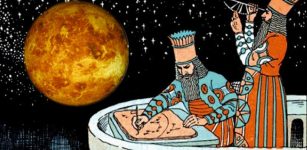 Elusive Planet Mercury As Seen Through The Eyes Of Ancient Astronomers
Archaeoastronomy | Dec 31, 2018
Elusive Planet Mercury As Seen Through The Eyes Of Ancient Astronomers
Archaeoastronomy | Dec 31, 2018 -
 Ancient Copy Of Jesus’ Secret Teachings To His Brother James Discovered – First Apocalypse And Future Events Described
Artifacts | Dec 2, 2017
Ancient Copy Of Jesus’ Secret Teachings To His Brother James Discovered – First Apocalypse And Future Events Described
Artifacts | Dec 2, 2017 -
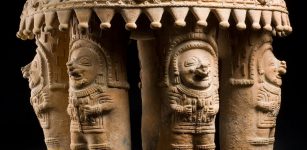 Ancient Secrets Of Sophisticated Jama-Coaque People
Civilizations | Sep 27, 2016
Ancient Secrets Of Sophisticated Jama-Coaque People
Civilizations | Sep 27, 2016 -
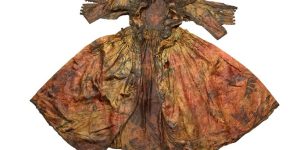 Unique 17th Century Silk Dress Found At Bottom Of The Wadden Sea Goes On Display
Artifacts | Jul 29, 2023
Unique 17th Century Silk Dress Found At Bottom Of The Wadden Sea Goes On Display
Artifacts | Jul 29, 2023 -
 Mystery Of The Lost Beverina Castle – Did Knights Templar Know Where It Was?
Ancient Mysteries | Jan 21, 2018
Mystery Of The Lost Beverina Castle – Did Knights Templar Know Where It Was?
Ancient Mysteries | Jan 21, 2018


